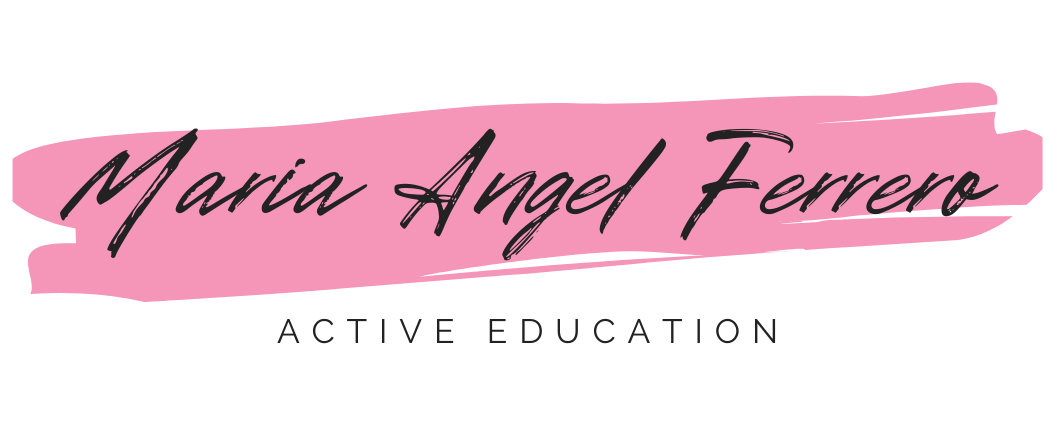Create an authentic sense of community in your classroom, regardless of the pandemic
Building a sense of community in a classroom is crucial for learning. The sense of belonging increases students’ motivation to learn, willingness to help each other, satisfaction with their academic programs, and cognitive learning.
The beginning of the year is the best moment to create a sense of community in your classroom. And while this year feels very different for many of us, there’s no reason we can’t create connections with our students.
No matter if our classes are 100% virtual, or hybrid, or blended, or in-person, creating a sense of community in your classroom is not that difficult, and it will always be beneficial.
Researchers identify 4 essential elements that create a sense of community:
- Mutual interdependence among members
- Connectedness & trust
- Interactivity
- Shared values and goals
In this post, I go through 5 simple steps that will help you forge bonds and create a classroom environment where every student feels safe and part of the community.
No matter what’s the format of your course and what are the channels you’re using. Creating a sense of community is this simple, and the learning outcomes are worth it.
Let’s take a look.
1. Define a common goal
A shared culture is only possible when there are shared goals, values, and beliefs.
The first step to creating a sense of community is defining common goals, values, and agreements. And I’m not talking about the intended learning outcomes you have listed on your syllabi. I’m talking about student’s shared goals.
These common goals are crucial to building trust and connections among students, as well as developing a sense of responsibility. The goals can be a mix of learning goals and life goals. They should be adapted to the type of course, the level and depth of study, the duration of the course, the maturity level of students, and the initial knowledge they have.
The key idea here is to give students the opportunity to set up their own shared goals, values, and agreements at the beginning of the course. While it might be a good idea to have some outlines on these three elements to guide the class, students must reflect and work on building their own community standards. This not only will increase their motivation towards learning, but it also will hold them accountable for achieving their objectives and complying with the community agreements.
Use the first half-hour of your lecture to work on the community goals, values, and agreements. Ask your students to work in small groups and reflect on what are the goals they should achieve at the end of the course, and have them classify by priority (top, mid, low). Then have them discuss with the other groups to determine which goals are common and finally have them vote. This activity can be done through a brainstorming session with post-its and voting stickers, but it can be also conducted remotely with tools like Mural or Miro.
We can do the same to reflect on classroom values and agreements. For example, you can ask them to brainstorm on what are appropriate/inappropriate behaviors both in physical and virtual lectures, and then make them ‘sign’ the agreement contract.
Finally, you can ask questions such as “How will we help each other adhere to the agreements we’ve adopted? What forms of reminders will you prefer and allow?” This will help you and students take actionable steps to accomplish those objectives and keep up with the community norms.
2. Use a common reward system
Recognizing individual accomplishments is a great way to motivate learning. Positive psychology studies show that by creating positive affect — like giving constant encouragement or focusing on students’ strengths rather than weakness — improves students’ self-efficacy. Learners with higher self-efficacy are more likely to achieve their goals and overcome challenges.
Also, gamification has been proven to be a great approach for teaching as it enhances students’ engagement and learning.
However, relying solely on individual rewards and recognition might also have a negative effect on learners, as it can increase the feeling of isolation of some students, especially those who are less extroverted or who struggle with some topics.
A great way to overcome the pitfalls of individual recognition is by building a common reward system. The principal aim is to increase connectedness, trust, and interdependence between students.
Instead of working individually to achieve their personal learning goals and secure their reward, students work as a group to achieve the community goals and obtain a common (bigger) reward.
There are plenty of ways you can set up a common reward system, but let me give you an example.
You can imagine a set of badges that go in line with the class goals, like “Effective communicator” or “Amazing tutor” or “Math genius”, or whatever suits your class goals and content. The idea is to encourage every student to obtain one badge, of course, after accomplishing the task for it, and if at the end of the class every student has gained a personal badge a common reward is revealed. The common reward can be something like “One extra week to finish mid-term paper” or “no-homework for tomorrow” or “one point in the final exam for everyone”. The idea here is to provide a greater and more satisfying collective reward than just individual recognition.
You recognize individual progress (badges) but also collaborative progress (big common reward). This encourages students to work in cooperation rather than in competition towards their common goals, increasing their sense of interdependence, connectedness, and belonging.
3. Keep the discussion going
Most of the learning happens outside the classroom when students are home and have to prepare assignments. Keep the conversation going even after the lecture, and provide a space where students can ask, comment, and give feedback regarding the lecture material, their struggles, and their learning experience.
Backchannel discussions are a great way for learners to have an on-topic conversation during and after the lecture. Having a Backchannel is also an effective way to maintain a connection with students in hybrid and online lectures.
There are several ways to keep the conversation going either through collaborative spaces, blackboards, blogs, chats, wikis, or forums. The fundamental idea behind these Backchannels is that students can log in questions, comments, feedback, doubts, or even learning notes, both during and outside classroom hours.
Think of it as a specialized Wikipedia for your own class with a complete FAQ section. Every student will contribute to the discussion and will have access to answers and feedback given to their peers. So, instead of answering the same question to every student that sends you an email asking about reports deadlines or precise guidelines, you can have them all go to the same wiki where all these questions have been already answered.
Another outstanding feature of Backchannels is that you can ask students to moderate the discussion, provide feedback, and answer their classmates’ questions when they know the solution. This opportunity to give feedback encourages peer learning, but also improves learners’ self-confidence and helps them build trust.
As a professor, you benefit also from it, as you spend less time answering the same questions repeatedly, and you delegate some of your responsibilities to the learners. Your job here is only to verify that the feedback given by other students is appropriate and accurate.
If you want to learn more about Backchannels, you can look at some digital tools I recommend for creating beautiful and organized backchannels. Remember to reward students for participating in the discussions by both asking and answering questions.
4. Encourage peer learning
As I mentioned before, peer-learning is an outstanding approach for inspiring responsibility and motivating students to take ownership of their learning.
When students are given the opportunity to teach and tutor other classmates, they’re not only revising their knowledge and own understanding, they’re also building self-confidence and trust in their community.
Peer learning activities are a powerful way to create a sense of interdependence, connectedness, trust, and shared goals between individuals.
You can easily implement peer learning through Backchannel discussions. But you can also imagine asking students to evaluate and give feedback to their peers after performing an assignment or class activity. You can give them instructions on how to evaluate and give feedback to others, and provide them with an evaluation grid so they can appreciate the work of their colleagues.
Another example of peer-learning is pairing students with different skills and backgrounds, but that share common learning objectives, for in-class activities. You may give them specific goals to focus on for the class and challenge them to achieve them through collaboration.
Other than learning and gaining a better understanding of the topics seen in class, students develop practical work skills such as teamwork, time management, organization, effective communication, and constructive feedback.
5. Reflect on the journey
The most effective way to enhance learning is to learn about how we learn. Every individual is different and their learning journey is unique.
However, we hardly ask students to reflect on their learning journey or give them enough space to think about what they’ve learned, how these match their goals and expectations, and how they felt during those lessons.
The agile method for management and innovation uses “agile retrospectives” as an opportunity to learn and improve by reflecting on past events and behaviors. The idea of retrospectives is to have participants share their thoughts after each lecture on the following questions:
- What I’ve learned?
- What worked well? What did I enjoy?
- What didn’t work well? What did I find challenging?
- What are we going to do differently?
When students answer these questions, they actually are thinking about how they think and learn. This encourages them to look closer at their learning journey, adjust and adapt goals, and take the actions to achieve those goals.
You can for example dedicate the last minutes of your class to wrap up on retrospectives by having an open discussion on what they liked, how they felt, and what could be improved.
There are plenty of retrospective activities to derive the lessons learned, and you can carry out them remotely by using a visual collaboration platform. It can also be an asynchronous activity. Students can rely on original formats to share their retrospective lessons. Blog entries, 1-minute videos, mind maps, picture collage. Apps such Flipgrid, Wakalet, Instagram, or Pinterest work great for this kind of activity.
Retrospective learning highlights the importance of honesty, transparency, and the concept of impostor syndrome for self-assessment.
This exercise also helps learners to build connections and interact with each other, as they might discover they are not alone in their struggles and feelings.
They’ll feel more empowered to work as a community, to meet their common goals, and to take action to solve potential conflicts or disagreements between them.
Final thoughts
Creating a sense of belonging and a safe, nurturing, supporting environment is crucial for learning. Learning is mainly a social and emotional activity.
It doesn’t take the latest technology or complex activities to build a positive learning community. And it doesn’t matter much whether your courses are online or in-person. Creating a sense of community is way easier than you think and is full of benefits for both learners and educators.
Remember that community is built over time, and mutual sharing and trust are essential. Physical distancing need not mean social distancing.
With a little creativity and willingness to create a positive environment for learning, we can create an authentic sense of community in our classrooms, regardless of the pandemic.

